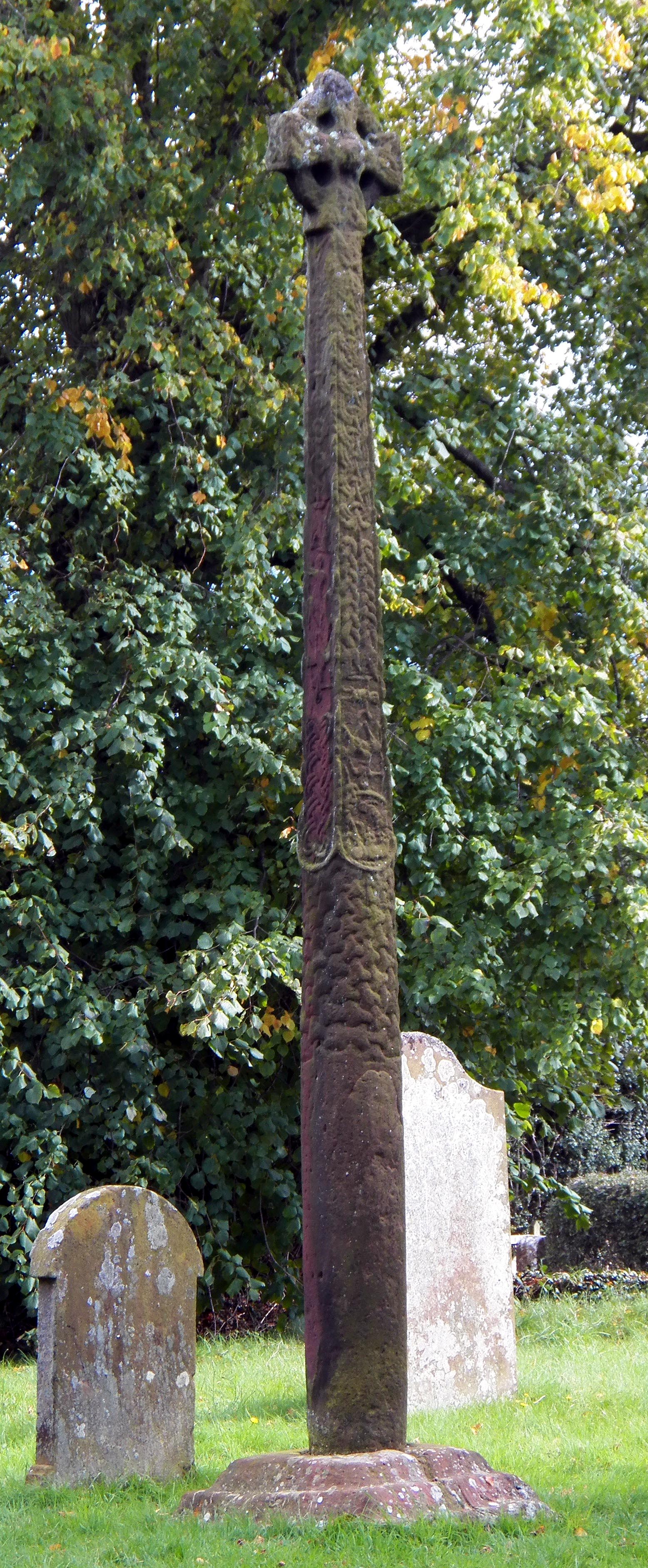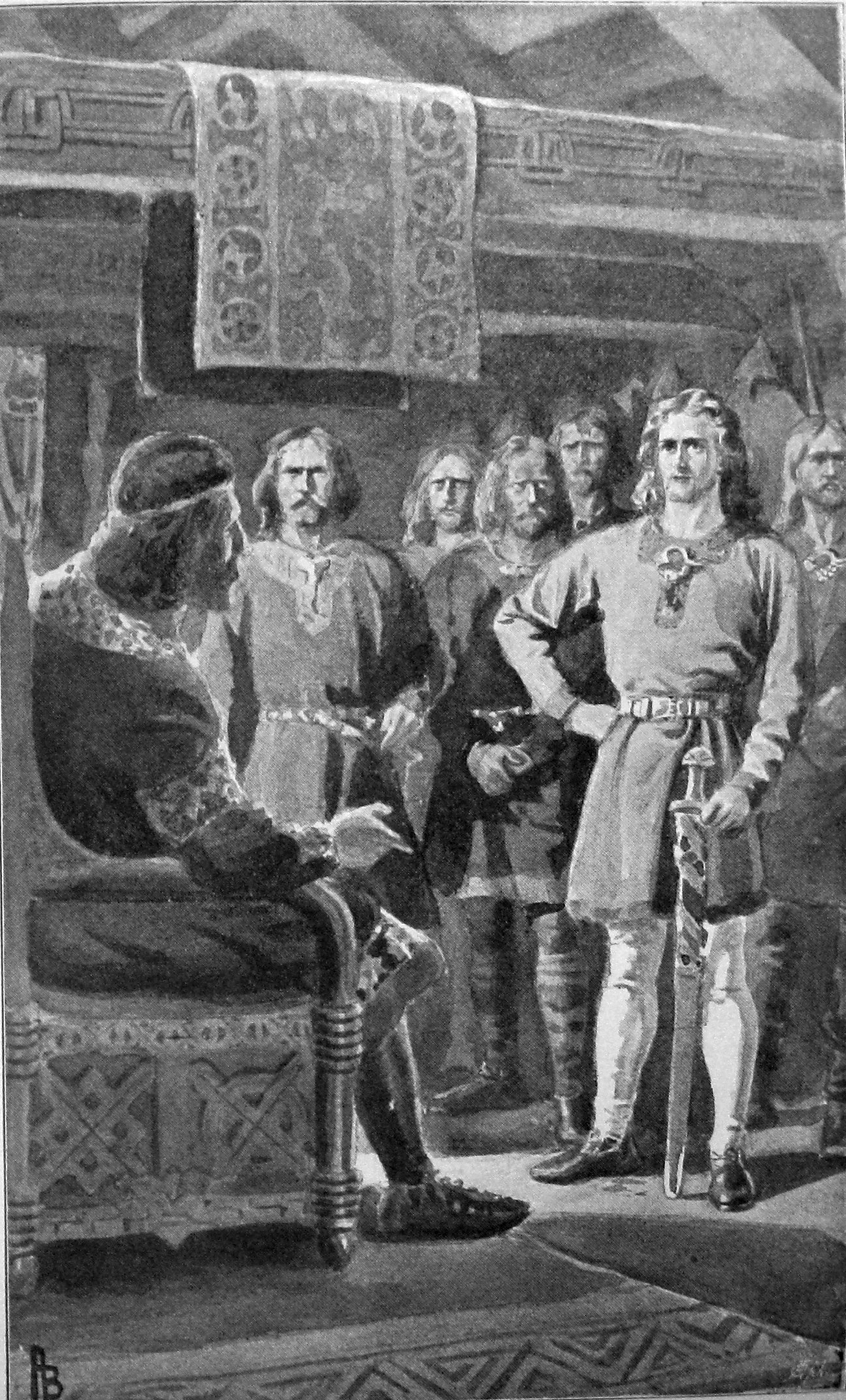|
Hallvarðr Háreksblesi
Hallvarðr Háreksblesi was one of the skalds of Canute the Great. Nothing is known about his life or family but eight fragments of his poetry on Canute have been preserved. While Hallvarðr's poetry resembles that of Canute's other poets in many respects it is unusual in its heavy use of pagan imagery. Extant fragments Six fragments of poetry by Hallvarðr are quoted in the Skáldskaparmál section of Snorri Sturluson's Prose Edda. One additional fragment is quoted in Knýtlinga saga and one in Heimskringla and kings' sagas derived from it. In Finnur Jónsson's complete edition of skaldic poetry the fragments are conjectured to be all from the same poem, a ''Knútsdrápa'' ("Lay of Canute"), and arranged in a suggested order. The first complete English translation was published by Roberta Frank in 1994. The extant fragments are mainly about Canute's expedition to England and his becoming king there in 1015-1016. Apart from what little can be conjectured from this, nothing is kno ... [...More Info...] [...Related Items...] OR: [Wikipedia] [Google] [Baidu] |
Skald
A skald, or skáld (Old Norse: , later ; , meaning "poet"), is one of the often named poets who composed skaldic poetry, one of the two kinds of Old Norse poetry, the other being Eddic poetry, which is anonymous. Skaldic poems were traditionally composed on one occasion, sometimes extempore, and include both extended works and single verses ('' lausavísur''). They are characteristically more ornate in form and diction than eddic poems, employing many kennings and heiti, more interlacing of sentence elements, and the complex ''dróttkvætt'' metre. More than 5,500 skaldic verses have survived, preserved in more than 700 manuscripts, including in several sagas and in Snorri Sturluson's ''Prose Edda'', a handbook of skaldic composition that led to a revival of the art. Many of these verses are fragments of originally longer works, and the authorship of many is unknown. The earliest known skald from whom verses survive is Bragi Boddason, known as Bragi the Old, a Norwegian skald of ... [...More Info...] [...Related Items...] OR: [Wikipedia] [Google] [Baidu] |
Viking Age Poets
Vikings ; non, víkingr is the modern name given to seafaring people originally from Scandinavia (present-day Denmark, Norway and Sweden), who from the late 8th to the late 11th centuries raided, pirated, traded and settled throughout parts of Europe.Roesdahl, pp. 9–22. They also voyaged as far as the Mediterranean, North Africa, Volga Bulgaria, the Middle East, and North America. In some of the countries they raided and settled in, this period is popularly known as the Viking Age, and the term "Viking" also commonly includes the inhabitants of the Scandinavian homelands as a collective whole. The Vikings had a profound impact on the early medieval history of Scandinavia, the British Isles, France, Estonia, and Kievan Rus'. Expert sailors and navigators aboard their characteristic longships, Vikings established Norse settlements and governments in the British Isles, the Faroe Islands, Iceland, Greenland, Normandy, and the Baltic coast, as well as a ... [...More Info...] [...Related Items...] OR: [Wikipedia] [Google] [Baidu] |
Gosforth Cross
The Gosforth Cross is a large stone monument in St Mary's churchyard at Gosforth in the English county of Cumbria, dating to the first half of the 10th century AD. Formerly part of the kingdom of Northumbria, the area was settled by Scandinavians some time in either the 9th or 10th century. It has gained reputation for its combination of Christian symbols with Nordic symbols, being a tangible piece of evidence of the impact of the Christianization of Scandinavia. Description The Gosforth Cross has elaborate carvings which have been interpreted as representing characters and scenes from Norse mythology, similarly to how the Jelling stones in Denmark depict Jesus with other Norse mythological characters. Its design is modelled after the cross design that originated during the Christianization of Ireland. The Gosforth Cross was first identified in 1886 by the amateur antiquarian Charles Arundel Parker in his book ''The Ancient Crosses at Gosford and Cumberland''. He demonstrated th ... [...More Info...] [...Related Items...] OR: [Wikipedia] [Google] [Baidu] |
Kenning
A kenning ( Icelandic: ) is a figure of speech in the type of circumlocution, a compound that employs figurative language in place of a more concrete single-word noun. Kennings are strongly associated with Old Norse-Icelandic and Old English poetry. They continued to be a feature of Icelandic poetry (including ''rímur'') for centuries, together with the closely related heiti. A kenning has two parts: a base-word (also known as a head-word) and a determinant. For example, the base-word of the kenning "íss rauðra randa" ('icicle of red shields' WORD Einarr Skúlason: ''Øxarflokkr'' 9) is ''íss'' ('ice, icicle') and the determinant is ''rǫnd'' ('rim, shield-rim, shield'). The thing, person, place or being to which the kenning refers is known as its referent (in this case a sword). Although kennings are sometimes hyphenated in English translation, Old Norse poetry did not require kennings to be in normal word order, nor do the parts of the kenning need to be side-by-side. The ... [...More Info...] [...Related Items...] OR: [Wikipedia] [Google] [Baidu] |
Yggdrasil
Yggdrasil (from Old Norse ), in Norse cosmology, is an immense and central sacred tree. Around it exists all else, including the Nine Worlds. Yggdrasil is attested in the ''Poetic Edda'' compiled in the 13th century from earlier traditional sources, and in the ''Prose Edda'' compiled in the 13th century by Snorri Sturluson. In both sources, Yggdrasil is an immense ash tree that is central to the cosmos and considered very holy. The gods go to Yggdrasil daily to assemble at their traditional governing assemblies, called things. The branches of Yggdrasil extend far into the heavens, and the tree is supported by three roots that extend far away into other locations; one to the well Urðarbrunnr in the heavens, one to the spring Hvergelmir, and another to the well Mímisbrunnr. Creatures live within Yggdrasil, including the dragon Níðhöggr, an unnamed eagle, and the stags Dáinn, Dvalinn, Duneyrr and Duraþrór. Scholars generally consider ''Hoddmímis holt'', ''Mímameiðr'' ... [...More Info...] [...Related Items...] OR: [Wikipedia] [Google] [Baidu] |
Midgard Serpent
In Germanic cosmology, Midgard (an anglicised form of Old Norse ; Old English , Old Saxon , Old High German , and Gothic ''Midjun-gards''; "middle yard", "middle enclosure") is the name for Earth (equivalent in meaning to the Greek term , "inhabited") inhabited by and known to humans in early Germanic cosmology. The Old Norse form plays a notable role in Norse cosmology. Etymology The Old Norse name is cognate with Gothic (attested in the Gospel of Luke as a translation of the Greek ), Old Saxon (in ''Heliand''), Old High German (in ''Muspilli''), and Old English . The latter, which appears in both prose and poetry, was transformed to or ("Middle-earth") in Middle English literature. All these forms stem from Common Germanic , a compound of ("middle") and ("yard, enclosure"). In early Germanic cosmology, it stands alongside the term ''world'' (cf. Old English , Old Saxon , Old High German , Old Frisian , Old Norse ), itself from a Common Germanic compound ''*wira-alđi ... [...More Info...] [...Related Items...] OR: [Wikipedia] [Google] [Baidu] |
Jötunn
A (also jotun; in the normalised scholarly spelling of Old Norse, ; ; plural / ) or, in Old English, (plural ) is a type of supernatural being in Germanic mythology. In Norse mythology, they are often contrasted with gods (Æsir and Vanir) and other non-human figures, such as dwarfs and elves, although the groupings are not always mutually exclusive. The entities themselves are referred to by several other terms, including , (or ) and if male and or if female. The typically dwell across boundaries from the gods and humans in lands such as . The are frequently attested throughout the Old Norse record, with also featuring in the Old English epic poem ''Beowulf''. The usage of the terms is dynamic, with an overall trend that the beings become portrayed as less impressive and more negative as Christianity becomes more influential. Although the term "giant" is sometimes used to gloss the word "" and its apparent synonyms in some translations and academic texts, are not ... [...More Info...] [...Related Items...] OR: [Wikipedia] [Google] [Baidu] |
Valkyries
In Norse mythology, a valkyrie ("chooser of the slain") is one of a host of female figures who guide souls of the dead to the god Odin's hall Valhalla. There, the deceased warriors become (Old Norse "single (or once) fighters"Orchard (1997:36) and Lindow (2001:104).). When the are not preparing for the events of Ragnarök, the valkyries bear them mead. Valkyries also appear as lovers of heroes and other mortals, where they are sometimes described as the daughters of royalty, sometimes accompanied by ravens and sometimes connected to swans or horses. Valkyries are attested in the ''Poetic Edda'' (a book of poems compiled in the 13th century from earlier traditional sources), the ''Prose Edda'', the (both by Snorri Sturluson) and the (one of the Sagas of Icelanders), all written—or compiled—in the 13th century. They appear throughout the poetry of skalds, in a 14th-century magical formula, charm, and in various runic inscriptions. The Old English cognate term appears in ... [...More Info...] [...Related Items...] OR: [Wikipedia] [Google] [Baidu] |
Norse Mythology
Norse, Nordic, or Scandinavian mythology is the body of myths belonging to the North Germanic peoples, stemming from Old Norse religion and continuing after the Christianization of Scandinavia, and into the Nordic folklore of the modern period. The northernmost extension of Germanic mythology and stemming from Proto-Germanic folklore, Norse mythology consists of tales of various deities, beings, and heroes derived from numerous sources from both before and after the pagan period, including medieval manuscripts, archaeological representations, and folk tradition. The source texts mention numerous gods such as the thunder-god Thor, the raven-flanked god Odin, the goddess Freyja, and numerous other deities. Most of the surviving mythology centers on the plights of the gods and their interaction with several other beings, such as humanity and the jötnar, beings who may be friends, lovers, foes, or family members of the gods. The cosmos in Norse mythology consists of Nine Worl ... [...More Info...] [...Related Items...] OR: [Wikipedia] [Google] [Baidu] |
Gunnlaugr Wormtongue
Gunnlaugr ormstunga (Old Norse: ; is, Gunnlaugur ormstunga ; "serpent-tongue") was an Icelandic skald. His life is described in '' Gunnlaugs saga ormstungu'', where several of his poems are preserved. Gunnlaugr was born ca. 983. From an early age he proved himself impetuous, audacious, brave, and tough. He was also a skilled author of mostly derogatory poems, which earned him the cognomen ''ormstunga'' "lindworm tongue". After a quarrel with his father, Illugi, Gunnlaugr left his home at the age of twelve to stay for some time at Borg with Þorsteinn Egilsson, the son of Egill Skallagrímsson. There, he became acquainted with Þorsteinn's daughter, Helga the fair, reputedly the most beautiful woman in Iceland. Her hair was so ample that she could hide herself in it. When Gunnlaugr was eighteen, he went abroad. At that time, Helga became his fiancée, on the condition that she would wait no more than three years for Gunnlaugr. He visited the courts of Norway, Ireland, Orkney an ... [...More Info...] [...Related Items...] OR: [Wikipedia] [Google] [Baidu] |







